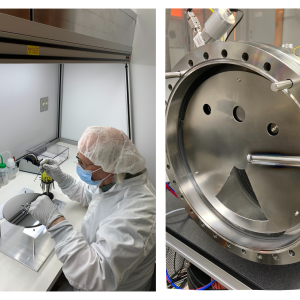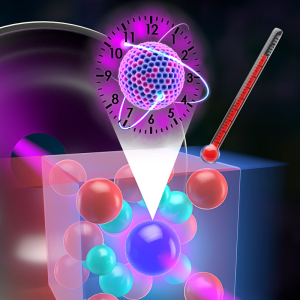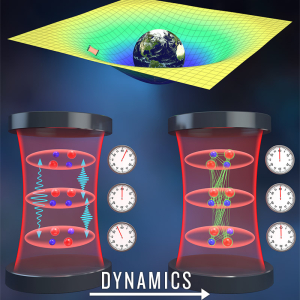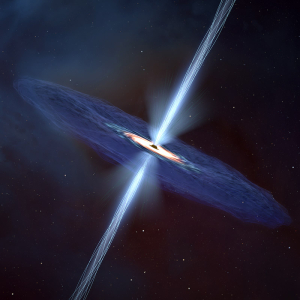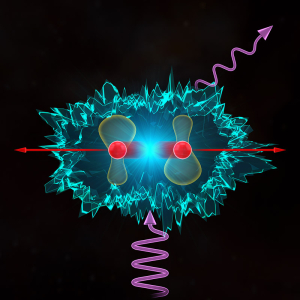Research Highlights
Displaying 1 - 20 of 507
Atomic & Molecular Physics | Laser Physics | Precision Measurement
JILA Collaboration Makes Cavity Quantum Electrodynamics into a Team Sport
PI(s):
Ana Maria Rey | James Thompson
Laser Physics | Nanoscience
Resonant Frequencies: Playing the Edge of Light with a 3-micron Baton
PI(s):
Margaret Murnane | Henry Kapteyn
Atomic & Molecular Physics | Laser Physics | Precision Measurement
Entangled Time: Pushing Atomic Clocks Beyond the Standard Quantum Limit
PI(s):
Jun Ye
Physics Education | Quantum Information Science & Technology
Building the quantum workforce of the future
PI(s):
Heather Lewandowski
Laser Physics | Quantum Information Science & Technology
Tailoring Record-Breaking Laser Stability for Coordinating Precise Atomic Dances
PI(s):
Jun Ye
Atomic & Molecular Physics | Laser Physics | Precision Measurement
A Symphony of Light and Atoms
PI(s):
James Thompson
Laser Physics | Quantum Information Science & Technology
Smoother Ticking Through Topology
PI(s):
Ana Maria Rey | James Thompson | Jun Ye
Atomic & Molecular Physics | Precision Measurement | Quantum Information Science & Technology
Thirty years of Bose-Einstein Condensates
PI(s):
Eric Cornell
Atomic & Molecular Physics | Laser Physics | Quantum Information Science & Technology
New quantum navigation device uses atoms to measure acceleration in 3D
PI(s):
Murray Holland
Laser Physics | Precision Measurement | Quantum Information Science & Technology
The Pursuit of Perfect Timekeeping
PI(s):
Jun Ye | Ana Maria Rey
Laser Physics | Precision Measurement | Quantum Information Science & Technology
Where Motion Meets Spin: A Quantum Leap in Simulating Magnetism
PI(s):
Jun Ye | Ana Maria Rey | John Bohn
Laser Physics | Quantum Information Science & Technology
Combining Machine Learning with Quantum Metrology: Making a Universal Quantum Sensor
PI(s):
Murray Holland
Atomic & Molecular Physics | Quantum Information Science & Technology
Quantum Teleportation Gets an Ionic 2D Upgrade
PI(s):
Ana Maria Rey
Biophysics | Chemical Physics | Laser Physics
Molecular Lock and Key: Decoding the Secrets of Ion Binding
PI(s):
J. Mathias Weber
Precision Measurement
How JILA Contributed to NASA’s Recent SUDA Project
PI(s):
Other JILA Researcher
Atomic & Molecular Physics | Laser Physics | Quantum Information Science & Technology
Dialing in the Temperature Needed for Precise Nuclear Timekeeping
PI(s):
Jun Ye
Laser Physics | Quantum Information Science & Technology
Using Frequency Combs to Detect Molecules in Your Breath
PI(s):
Jun Ye
Laser Physics | Quantum Information Science & Technology
Sneaky Clocks: Uncovering Einstein’s Relativity in an Interacting Atomic Playground
PI(s):
Ana Maria Rey | Jun Ye
Astrophysics
Trying to Solve a Key Black Hole Mystery: Simulating Magnetic Flows Around Black Holes
PI(s):
Jason Dexter | Mitch Begelman
Atomic & Molecular Physics | Laser Physics | Quantum Information Science & Technology
Quantum Billiard Balls: Digging Deeper into Light-Assisted Atomic Collisions
PI(s):
Cindy Regal | Jose D'Incao







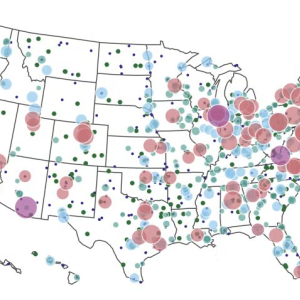



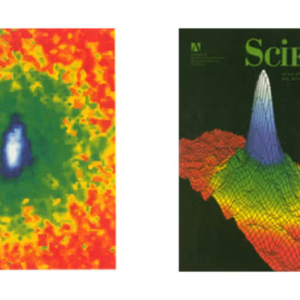
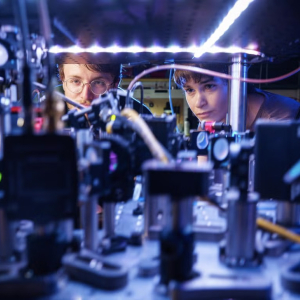
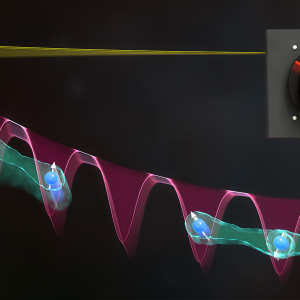
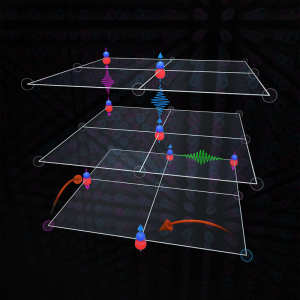
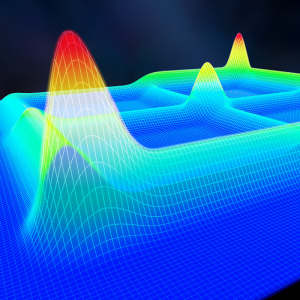
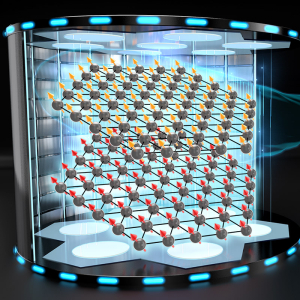
![The many different molecules trying to fill the binding site of octamethyl calix[4]pyrrole (omC4P)](/sites/default/files/styles/highlights_image/public/images/2025-04/weber_omc4p_thumbnail.jpg?h=fbf7a813&itok=0kvUTwZb)
